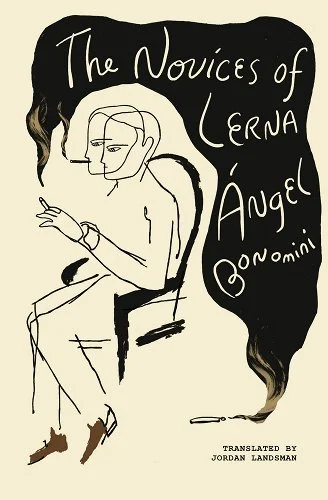When André Breton defeated Yvan Goll for the right to define the new art “surrealism,” he perhaps won a Pyrrhic victory. The lively debates, both physical and intellectual, were an attempt to cohere the fractured French artistic and political movement by choosing a leader, writing one manifesto, and setting parameters. These rules became cages; the ensuing decades of excommunications and damaged artistic egos resulted in offshoots with vague or amorphous claims, as well as the ensuing progeny, postmodernism and magical realism. In Europe, surrealism’s most fruitful spaces were visual art and poetry, where the “automatism” Breton desired could thrive in the imagistic spaces of these genres. Surprises, feints, and playfulness in narrative literature were harder to fit into his manifesto’s definition because the form, to be successful, requires an extreme amount of intention and control. The automatic imagination of a surrealist can only ever be an artifice for an exacting rigor.
The Argentine writer Ángel Bonomini exerts the necessary control over his version of surrealist literature. His collection of absurd stories, The Novices of Lerna (Transit Books, 2024), translated by Jordan Landsman, has arrived for the first time in English from Transit Books. The English language publisher of writers such as Andrés Barba and 2023 Nobel Prize Winner Jon Fosse brings us a novella and fifteen imaginative and varied stories that hold a mirror up to realism and meditate on the limits of subjectivity.
The titular novella follows an academic, Dr. Ramon Beltra, summoned to the town of Lerna in Switzerland for a six-month fellowship, which requires a “frankly disconcerting report” of his physical characteristics. His intellectual work, the “meager resume,” a single article of “dubious originality,” and the suspicious tone with which these requests arrive (“cloying, cautious, and bland”), worry Beltra. Yet, knowing his prospects are scant in his native Argentina, the scholar sets off for Europe, because at least the invitation was an opportunity to see the world. Quoting the letter he receives at length, the narrator meditates on the suspicious tone:
Illustrious Doctor Beltra: The humble and traditional University of Lerna, dedicated, as your Eminence is not unaware, to legal studies and the social sciences for more than two centuries, contacts you, the Eminent Doctor, by way of this humble servant (the letter was from the rector) so that you might have the generosity to…
Here Bonomini offers up some gestures of the absurd events to come. The parodic humility rendered by the translator with extraneous clauses, the repetition of “eminent/eminence,” which attempts to signal the longevity of the university’s pursuits, all emphasize the personalization of the fellowship. Beltra is special to the folks in Lerna, and his invitation isn’t to be taken lightly.
The novella proceeds in this mock comic tone during his plane ride to Europe where he falls in love with a flight attendant, Sandra. Unexpected “mechanical breakdowns” allow him and this love interest time in Lisbon. Several nights of passion and adoration follow. Throughout, Beltra muses that an Argentine’s return to Europe is a sort of “inheritance” that most certainly leads to disappointment, but the reality of his experience is one of deep pleasure and success. This slant maneuver presented in the jaunty nonchalance of Beltra’s narration creates a particularly destabilizing feeling in the reader. The absence of fear as coincidences or obstacles pile up is the introduction of surrealist maneuvers by Bonomini. His fictional world, as presented in this novella, develops a split truth, one where narrative reality and absurdist abstraction hang in the balance.
The narrative reality follows the simple cause and effect arc common in fiction. The narrator is invited to Lerna, so he accepts the fellowship and heads off on a flight to Europe. Absurdism enters when Beltra faces the world. His interiority, or psychology, is adjacent to the things he experiences because Bonomini presents the world as tightly wound in Beltra’s favor. From his meager academic record to a sprawling six-month fellowship, and his love affair with Sandra, everything comes up Dr. Beltra. He fails upward, and he fails eastward, back into Europe, back into the academy, a land of logic, reason, and control.
These sorts of fractures continue across the other stories, particularly in the standouts, “The C.C.C.,” “Theories,” and “The Report.” In “The C.C.C.,” two senior citizen cousins visit the same chain coffee shop every day. The café, where “everything gleamed,” allows the men to play dice, while a single waiter behaves “more like a nurse than a servant,” which one of the men calls “professional” and the other finds rude. The café is decorated with lots of chrome, almost like a hospital. This bright washed world provides the narrator space to speculate about the use of such a place, one which lacks “charm,” but “passes the time.” It is sterile and odd, perhaps a bit unfriendly. Combined with the age of the narrators and the behavior of the waiter, one read of the situation could be that the café behaves like an old-folks home. To shake things up, the cousin suggests they go to a different location, and when they can’t agree on which, they head their separate ways, only to accidentally end up in the same location they always visit. They each claim to have entered different doors but still return to the same seats, with the same games. Here too, the narrator finds himself at odds with the way the world should work and the way it does. The world the reader understands, and the one presented by Bonomini are extremely limited and subjective, which allows the author via unstable and chatty narrators to advance absurd and anti-realist claims within his stories.
In “Theories” and “The Report,” narrators engage more acutely with the world by attempting to understand its limits, gaps, and logic. “Theories” follows a narrator who is full of them, and he organizes each according to colors and then the elements, but finds himself too “lazy” to complete the schemas in full. Here Bonomini adds to his surrealist logic. Ordering forces, such as reason, or control, are the purview of realists, folks with a belief in a stable subjectivity and individuality. People who think and therefore are. “The Report” acts as a corollary to “Theories,” where a military man of a recently installed junta speaks of “equipment, techniques, and weapons” at a vague institution’s disposal with which they can enact and expand their “universal” movement and philosophy. This story is one of the most ironic in the collection because it inverts the individual psychology and mechanisms of the preceding stories to present a more general, technocratic psychology. But unlike Gogol satirizing the world of bureaucrats, Bonomini allows “The Report” to advocate for more absurdism. The narrator argues that “time is in reverse,” “human senses function like mirrors,” “who can think that a is equal to a? Who can defend the clumsy idea that the first a in Ana is equal to the second a?” Delivered in a form of authority and sincerity, the narrator builds these claims without a proper narrative, like a manifesto delivered by Bonomini with several steps of mediation and dispossessed authority. The mediation, between author, speaker, writer of the report, and the report itself, helps question the whole enterprise: what is being prioritized, and what is being excluded?
The structure of this story recalls the rigors of the academy presented in the Novices of Lerna novella. When Beltra arrives in Lerna, he is greeted by a Portuguese man who looks and behaves just like him. This man is his guide to the university, but when Beltra enters the hallowed halls of Lerna, he discovers the entire invited faculty, called “novices,” look identical to him. The specifics of his personality, the efforts of his individuality have been drilled down to by the university administration. They codified him and his peers. Each novice is sorted according to Theology, Mathematics, and Law, three forms of understanding that each suppose their own sorts of knowledge and reality—divine, logical, or institutional. Beltra changes his clothes into the appropriate attire and believes that the attention to detail demanded by Lerna was “a way of disappearing from the world,” the uniform “equalizes” and “depersonalizes.” The world of Lerna is not individuals making up a mass, but a mass acting like a singular individual, much like a military, a cult, or even an institution.
The hijinks of Lerna proceed from there and they offer a thrilling and comic read. But the opposite side of that comedy is a sort of existential horror that questions the basis of things like isolation and identity and thus in turn, pushes literature into realms that study the question of The Real. For it is true, within the scope of the novella, that each and every novice looks and talks identically to Ramon Beltra, so why could such a thing not be true in the world outside the text? What Bonomini’s fantastic collection of fiction presents is not simple answers to the questions it raises, but more cascading and knotty questions. Does the reader trust the official report of the military junta more than the ramblings of a talkative retiree? Or the inverse? By phrasing his absurdism in the languages of authority, knowledge, and truth, Bonomini digs at the bases of such things, allowing the worlds of his stories to slither out and off the page, offer forbidden fruit, and shoot readers into a fallen and forgotten world where the real is absurd and the absurd is really the most true thing on offer.




